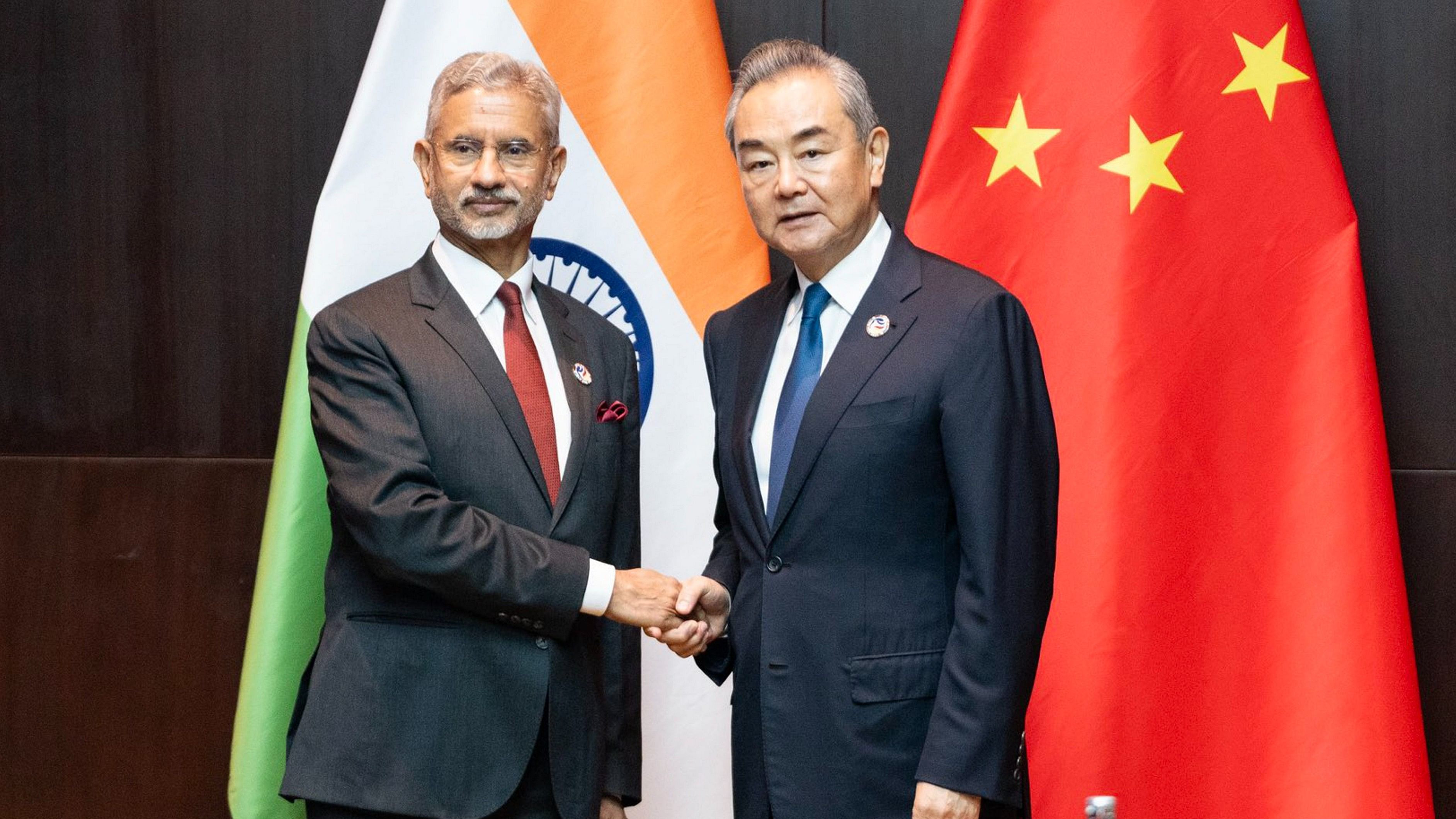
Minister of External Affairs S. Jaishankar with Foreign Minister of China Wang Yi during a meeting on the sidelines of ASEAN meetings, in Vientiane, Thursday.
Credit: PTI Photo
New Delhi: Even as Beijing on Thursday once again tacitly nudged New Delhi to accept the new normal along the Line of Actual Control (LAC) in eastern Ladakh, India insisted that peace along its disputed boundary with China was essential for bringing the bilateral relations back on track.
External Affairs Minister S Jaishankar had a bilateral meeting with Chinese Foreign Minister Wang Yi in Vientiane. It was the second meeting between the two this month. They had a bilateral meeting on the sideline of the Shanghai Cooperation Organisation’s summit in Astana early this month.
With the soldiers of the two nations still engaged in a stand-off on at least two points along the disputed boundary in eastern Ladakh, the talks between Jaishankar and Wang on Thursday focussed on finding "an early resolution of the remaining issues" along the LAC to stabilize and rebuild bilateral relations, according to the Ministry of External Affairs (MEA).
“Both sides should take responsibility for history, the people, and the world, and rationally transcend contradictions, differences, and frictions to promote the improvement and stable and sustainable development of China-India relations,” Wang was quoted telling Jaishankar in a readout issued by the Ministry of Foreign Affairs of the Chinese Government on the meeting between the two.
“The state of the border will necessarily be reflected in the state of our ties,” Jaishankar posted on X after holding talks with Wang on the sideline of a conclave of the foreign ministers of the East Asia Summit (EAS) nations in the capital of Lao PDR. “Agreed on the need to give strong guidance to complete the disengagement process (along the LAC in eastern Ladakh). Must ensure full respect for the LAC and past agreements.”
“Improving bilateral relations should reflect the strategic pattern of China and India, two emerging developing countries, handling differences between the two sides should reflect the political wisdom of the two ancient civilizations of China and India, and responding to global challenges should reflect the unity and cooperation of the Global South countries,” Wang told Jaishankar.
Ever since Beijing attempted to change the status quo along the India-China LAC in eastern Ladakh by deploying a large number of troops of the Chinese People’s Liberation Army (PLA) close to it in April-May 2020, New Delhi has been accusing the neighbouring communist country of flouting the 1993 and 1996 bilateral agreements. The Indian Army too had to deploy additional troops to resist the Chinese PLA’s move to push the LAC westward. This resulted in a military stand-off, which reached a flashpoint with a violent clash at the Galwan Valley on June 15, 2020, resulting in casualties on both sides.
The 1993 and 1996 agreements required both sides to refrain from amassing large numbers of troops in the border areas, to strictly abide by and respect the LAC, and to avoid taking any unilateral action to alter it.
Though protracted negotiations led to the mutual withdrawal of troops by both the Indian Army and the Chinese PLA from some of the face-off points along the LAC, like Galwan Valley, the northern and southern banks of Pangong Tso, Gogra Post, and Hot Springs, the stand-off could not be resolved completely so far.
The PLA troops deployed in Depsang, well inside the territory of India along the LAC with China, are continuing to block the Indian Army’s access to Patrolling Points 10, 11, 12, 12A, and 13. A face-off is also continuing in Demchok.
Beijing, however, has been claiming that the mutual withdrawal of troops by the Chinese PLA and the Indian Army from Patrolling Point 15 (Gogra-Hotsprings area) in September 2022 marked the restoration of normalcy along the LAC in eastern Ladakh. China’s claim appears to be an attempt to subtly build up pressure on India to accept the “new normal” in the Depsang and Demchok areas.
